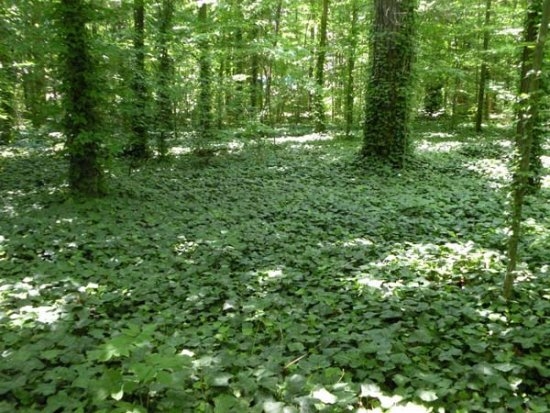Spring is when we run to the nursery, anxious to get started after oggling garden magazines all winter. Those six-pack annuals are so tempting and, fortunately, innocuous, but there are a few truly dangerous specimens lurking out there, waiting to take over your garden and then some!
Invasive species take advantage of conditions where their natural controls, such as pests and disease, are often absent. This allows them to grow like crazy, displacing native plants and the animals that depend on them, reducing the biodiversity essential for a healthy ecosystem.
Some invasives can be found in nurseries and are best avoided:
1. English Ivy is a familiar sight in urban and suburban gardens. This creeping vine forms “ivy deserts” where it outcomptes other plants for light and water. The thick, waxy foliage makes herbicides largely ineffective. Don't buy it; if you have it, consider having it removed.
2. Periwinkle spreads by rooting wherever it's stems touch the soil. It is especially dangerous in riparian areas where even a small piece can wash downstream and become established. Remove by pulling out all root nodes and stolons. Do not remove by mowing; the chopped-up pieces are likely to re-root.
3. Broom (Scotch, Bridal, French, Portuguese, Spanish) produces copious seed and biomass which is a fire hazard in some areas. The foliage is nutritionaly lacking and has little livestock value. Some cultivars are said to be “sterile”, but these claims have not been verified.
The California Invasive Plant Council has a list of top 15 invasive plants that are a concern in the Central Valley. Don't worry if some of your favorite plants are on the list; Cal IPC has substitutes as well!
If you have a gardening related question you can contact the UC Master Gardeners at 209-953-6112. More information can be found on our website.
